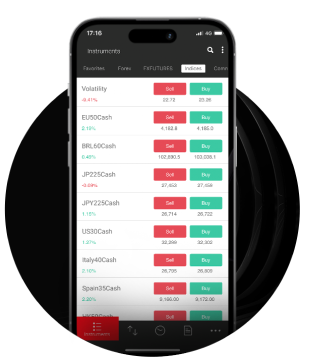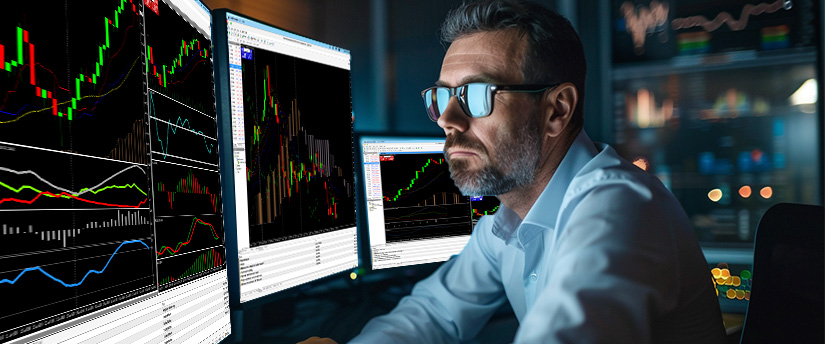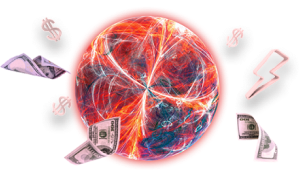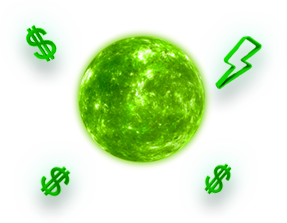The choice between different trading platforms is one of the most important ones a trader can make. It largely dictates the shape of your trading routine, and can enhance or invalidate certain strategies. As such, traders need to find a platform that fits their style.
But what does that really mean? A new trader may not know what their trading strategy will be and what platforms are capable of, so they may not realise that there are alternatives better suited to their needs. In fact, they may not know what to look for at all.
And while the process of finding the right platform does involve trial and error, it’s not all guesswork. If they focus on their needs, most traders can figure out the right platform for themselves quickly, but that requires some work before opening the software.
This article will deal with how to prep to find the right trading platform, and what to consider when choosing one, depending on your own preferences.
Treders getting ready to Find Your Platform
Contrary to popular belief, you don’t need to have your full strategy developed by the time you look for a platform. Knowing your preferences at least to some extent can be a significant help.
For instance, let’s say you’re a trader interested in scalping. You need to look up what scalping is, how it functions, and what tools traders most often use. Then, you’ll know what to look for in a platform.

For instance, let’s stick with our scalping example and look at what they need. Scalping, of course, is a very quick style of trading, and as such, a quick platform is required. One with low latency, no in-platform delays, a smooth interface, and adept with multi-asset trading.
On top of that, you can research the indicators and tools most scalpers use. One-click trading, to name one, is an absolute must when it comes to scalping, as it can greatly increase the speed at which you place your trades.
When you gather all of this information, it’s easy to look at a platform and see what you need from it. You will most likely still need to try out the platform to see the practical feel of it, but by that point, you’ll have narrowed down your choices and need to do much less than if you’re going from platform to platform randomly.
Platform Features: Interface
Traders often neglect looking into a platform’s interface before deciding to go with it. The issue with that is, if you’re spending your trading hours in a platform that frustrates you, it’ll directly impact your trading performance.
Think about when and how you trade. Most likely, you perform best when you’re well rested, with a clear mind, and have no outside frustrations. Trading itself can be tense, and piling onto that is a bad idea.
A frustrated trader easily falls into bad habits. You may forget your stops, rush into positions that go against your plan, and trade emotionally, with issues such as revenge trading or chasing losses. As such, a pleasant platform has a very direct impact on trader performance.
Most modern platforms have focused on the user experience and, thus, do provide what most traders need. However, some very common options like MetaTrader 4 may feel visually dated to some traders. The tip here is not to judge based on looks, but rather navigation and speed.

Be that as it may, here are the three top platforms for people who focus on interface:
- cTrader
- MetaTrader 5
- MT4(メタトレーダー4)
Latency and Order Execution Speed
The next part has to do with what we already mentioned when explaining scalping. However, latency and execution speed are vital not only for scalpers but also for any trader who trades markets that tend to get volatile.
The main thing about latency is that it reduces the risk of slippage, or your order not being placed at the price you wanted. Now, slippage can also work in your favour, but with trading in general, you want to be in as much control as possible.
On top of that, if you use any fast-paced strategy, low latency is absolutely instrumental. You’ll want to place your trades precisely, quickly, and without worrying whether strange delays will influence your positions.
In terms of latency, the best platforms are: MetaTrader 5, cTrader, and MetaTrader 4.
Traders using charting, Indicators & Analysis
Now is where we get into the functionality of the platform. There are many things to look at when inspecting a platform’s analytical capabilities. In particular, there are a few categories:
タイムフレーム
Timeframes are a very important component to trading as they dictate how precisely you can view the markets. In general, the more timeframes, the better. Here, cTrader outperforms both MetaTraders.
Chart Types
While they are less important than other segments, as most traders stick to candlesticks and lines, and nearly all modern platforms provide that, additional chart types can support certain fundamental and technical strategies that require deeper insight. Once again, cTrader stands on top here.
Order Types and Execution Modes
Your trading orders can be placed in multiple ways, affecting the pricing and functioning of the trade. These have a major impact on risk as well as your control over entries and exits. MetaTrader 5 is the leading option here, followed by cTrader and MetaTrader 4.
Number of Indicators and Graphical Objects
Simply put, indicators can be a significant assistance in trading by providing a clear visual overview of market activity. It’s important to have at least the minimum of those needed for your trading strategy, and anything over that is a nice bonus. Out of the box, cTrader is the strongest, MetaTrader 5 is next, and MetaTrader 4 is last.

Algo Trading and Backtesting
As a popular form of trading, algo trading allows you to automate your routine, eliminating any bias. It is often paired with backtesting, which you can use to verify the function and power of the bots you are using. MetaTrader 5 is the strongest here, followed by cTrader and MetaTrader 4.
Customisation & Community
Here’s where things get interesting. While cTrader performs best in most categories so far, these are out-of-the-box ratings. However, most modern platforms have extensive customisation options. This, coupled with a community that works tirelessly, is what places MetaTrader 4 and 5 at the top of most traders’ lists.
The question here is whether you want to bother with additional tools. In other words, if you aren’t interested in adjusting your platform through community-made tools, cTrader may be the best option. Otherwise, MetaTrader 4 and 5 flip the table, and become stronger in most categories.
Final Note: Consider Availability
As one final note, it’s important to see how widely a platform is available before making your choice. Choosing cTrader may limit your brokerage options, which can be difficult depending on your location and inclination to switch brokers. MetaTrader 4 is the safest choice here, since nearly every forex and CFD broker has it as one of its options.
Find your strategy and the tools required, compare them with these platforms, and you’ll find your perfect match in no time.
免責事項: 本情報は、投資助言や投資推奨ではなく、マーケティングの一環として提供されています。IronFXは、ここで参照またはリンクされている第三者によって提供されたいかなるデータまたは情報に対しても責任を負いません。
















